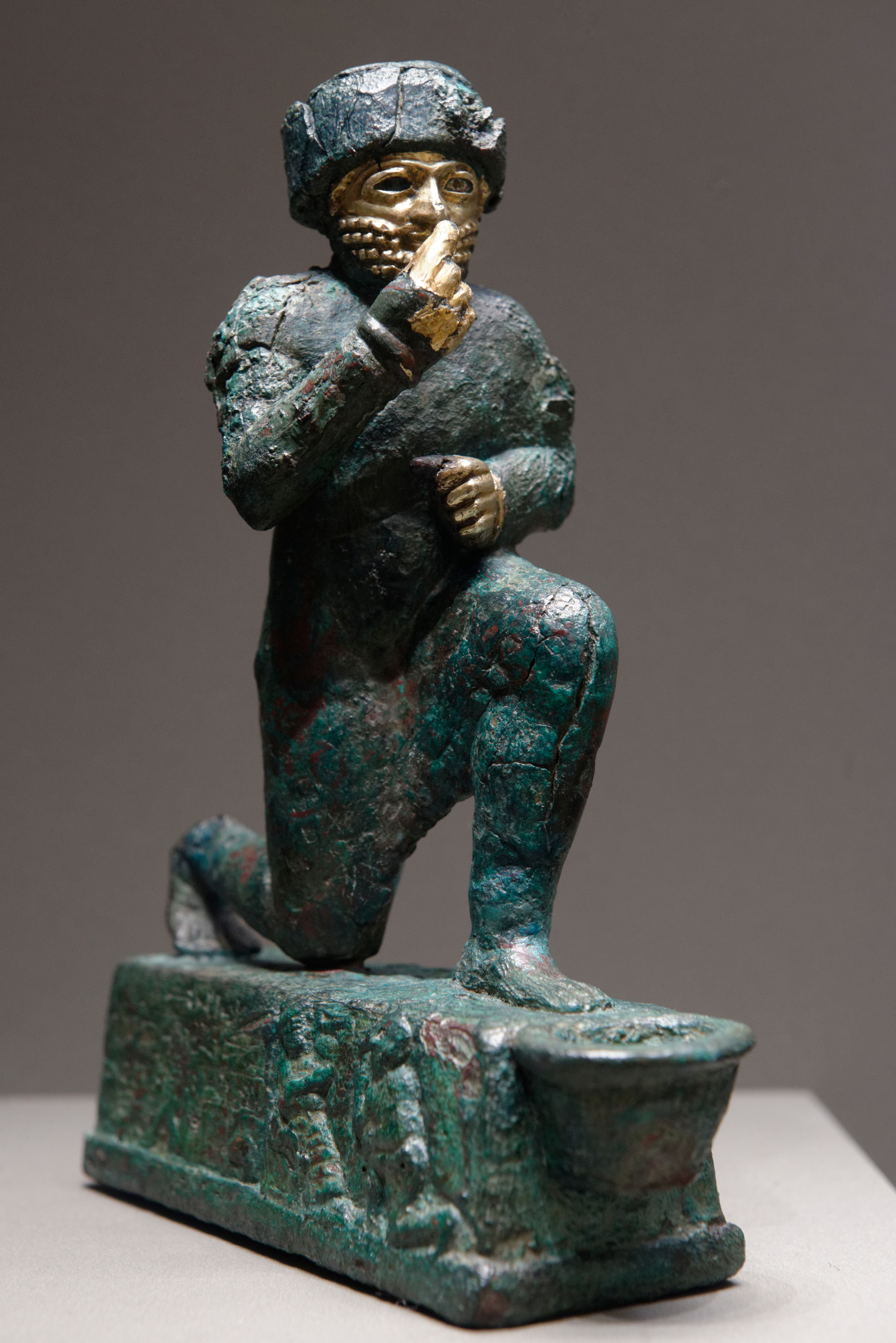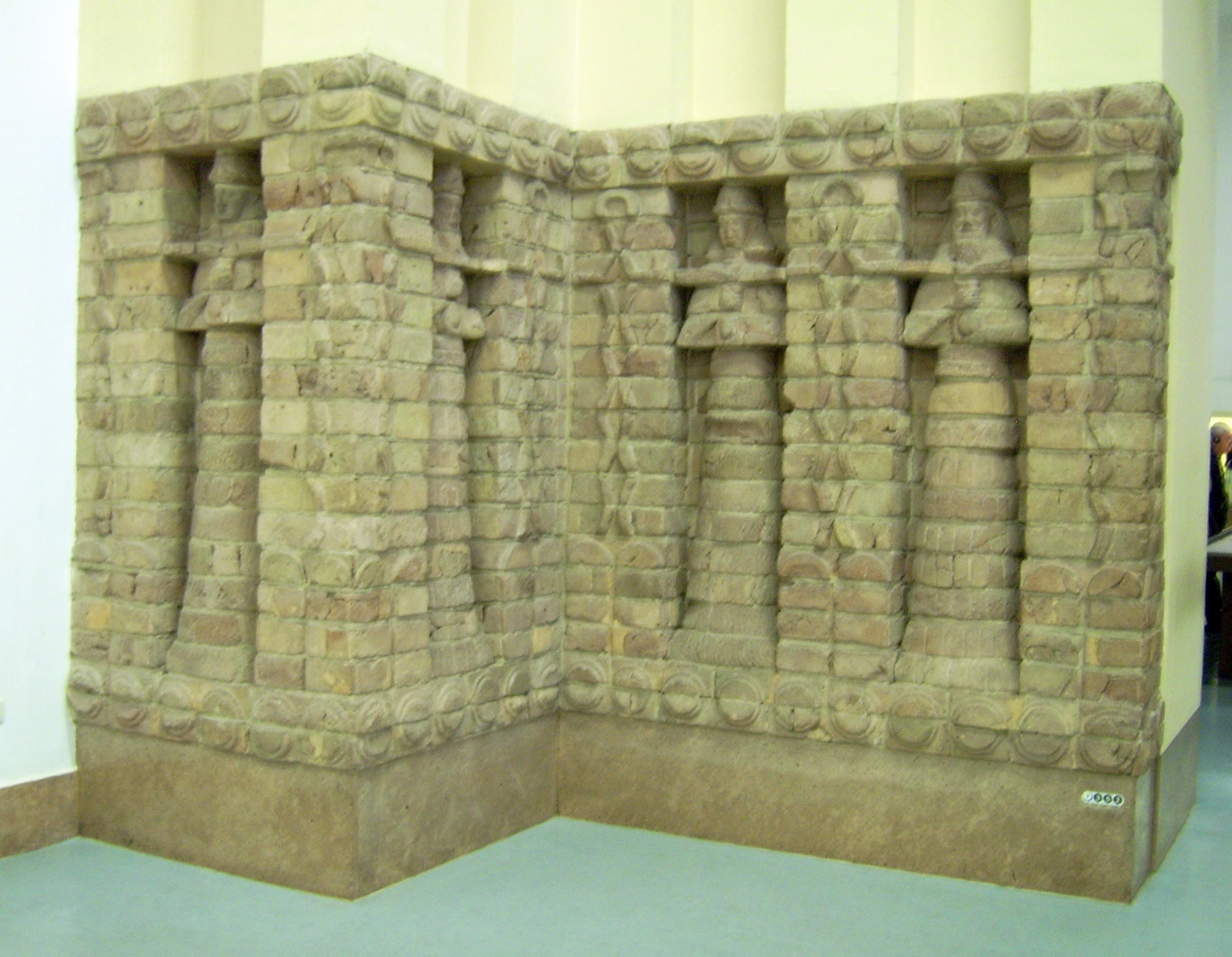|
Irdanene
Irdanene (IR3-ne-ne) (also Urdunene or IRene) was a ruler of Old Babylonian period Uruk and son of his predecessor, An-am. He is thought to have been a contemporary of Rim-Sîn I (c. 1822–1763 BC), ruler of the city of Larsa based on his 14th year name which records the defeat of Uruk, and the name of Irdanene (considered as an uncertain reading) i.e. "Year the armies of Uruk, Isin, Babylon, Sutum, Rapiqum, and of Irdanene the king of Uruk were smitten with weapons". . Fitzgerald, "The Rulers of Larsa", Yale University Dissertation, 2002 Rim-Sin I also dealt with this in three known inscriptions. One, on a clay cone, read "... when he smote with weapons the army of Uruk, Isin, Babylon, Rapiqum, and Sutium, captured iR-ne-ne, king of Uruk, in that battle, (and) laid his foot on his head as if he were a snake ...". While no i ... [...More Info...] [...Related Items...] OR: [Wikipedia] [Google] [Baidu] |
An-am
__NOTOC__ An-am (AN-am3) (also Dingiram or Anam) was a ruler of the Old Babylonian period city of Uruk. He took the titles of "Shepard of Uruk" and "Army Chief of Uruk". An-am is known to be the father of the succeeding ruler Irdanene from the latter's year name "... brought a statue in gold representing Dingiram his father into the temple of Nanaia". Unlike the rest of the dynasty An-am and Irdanene had Sumerian names. A royal hymn to An-am was found at Uruk. He restored the temples of An and Inanna "the ancient work of divine Ur-Nammu and Sulgi". From one inscription found at Uruk we know that he was the son of Ilān-šemeā and that he rebuilt the city wall of Uruk. In another inscription he records building a temple for the goddess Kanisurra, called the "mistress of the Iturungal", with the Iturungal being a major canal in Sumer. Several of An-am's year names are known: *Year AN-am became king *Year in which (Dingiram) made opposite the gate of the gipar / "nunnery" a pure ... [...More Info...] [...Related Items...] OR: [Wikipedia] [Google] [Baidu] |
Uruk
Uruk, the archeological site known today as Warka, was an ancient city in the Near East, located east of the current bed of the Euphrates River, on an ancient, now-dried channel of the river in Muthanna Governorate, Iraq. The site lies 93 kilometers (58 miles) northwest of ancient Ur, 108 kilometers (67 miles) southeast of ancient Nippur, and 24 kilometers (15 miles) northwest of ancient Larsa. It is east of modern Samawah. Uruk is the type site for the Uruk period. Uruk played a leading role in the early urbanization of Sumer in the mid-4th millennium BC. By the final phase of the Uruk period around 3100 BC, the city may have had 40,000 residents, with 80,000–90,000 people living in its environs, making it the largest urban area in the world at the time. Gilgamesh, according to the chronology presented in the '' Sumerian King List'' (''SKL''), ruled Uruk in the 27th century BC. After the end of the Early Dynastic period, with the rise of the Akkadian Empire, the ci ... [...More Info...] [...Related Items...] OR: [Wikipedia] [Google] [Baidu] |
Rîm-Anum
__NOTOC__ Rîm-Anum "ri-im-da-nu-um" (Also RimAnum) was a ruler of Uruk for about four years (18 months has also been suggested) and most notably was part of the widespread revolt, led by Rim-sin II of Larsa and including 26 cities, among them Uruk, Ur, Isin and Kisurra as well as three "Elamite" governors (Tanene, Werriri, Kalumatum), against the First Dynasty of Babylon, at that time ruled by Samsu-iluna (c. 1749–1712 BC), son of Hammurabi. Texts of Samsu-iluna indicate Rîm-Anum was captured but are uncertain about whether he was put to death or spared. The beginning of the reign of Rîm-Anum is generally taken as being the 8th regnal year of Samsu-iluna (c. 1742 BC), in the eighth month. Within a few years Uruk was back under the control of Babylon. While it is traditionally assumed that Rîm-Anum ruled from Uruk, at least part of the time, it has also been proposed that he ruled from Malgium. Many tablets of Rîm-Anum were found at the temple of Sîn-kāšid during ex ... [...More Info...] [...Related Items...] OR: [Wikipedia] [Google] [Baidu] |
Rim-Sîn I
Rim-Sîn I (, Dri-im- Dsuen) ruled the ancient Near East city-state of Larsa from 1822 BC to 1763 BC ( MC). His sister En-ane-du was high priestess of the moon god in Ur. Rim-Sin I was a contemporary of Hammurabi of Babylon and Irdanene of Uruk. . Fitzgerald, "The Rulers of Larsa", Yale University Dissertation, 2002 His father, Kudur-mabuk, may have been of Elamite descent, notwithstanding his Akkadian name. Reign Rim-Sin’s reign of started sometime around 1822 BC (in ...[...More Info...] [...Related Items...] OR: [Wikipedia] [Google] [Baidu] |
List Of Mesopotamian Dynasties
The history of Mesopotamia extends from the Lower Paleolithic period until the establishment of the Caliphate in the late 7th century AD, after which the region came to be known as History of Iraq, Iraq. This list covers dynasties and monarchs of Mesopotamia up until the fall of the Neo-Babylonian Empire in 539 BC, after which native Mesopotamian monarchs never again ruled the region. The earliest records of writing are known from the Uruk period (or "Protoliterate period") in the 4th millennium BC, with documentation of actual historical events, and the ancient history of the region, being known from the middle of the third millennium BC onwards, alongside cuneiform records written by early kings. This period, known as the Early Dynastic Period (Mesopotamia), Early Dynastic Period, is typically subdivided into three: 2900–2750 BC (ED I), 2750–2600 BC (ED II) and 2600–2350 BC (ED III), and was followed by Akkadian Empire, Akkadian (~2350–2100 BC) and Third Dynasty of Ur, Ne ... [...More Info...] [...Related Items...] OR: [Wikipedia] [Google] [Baidu] |
Rapiqum
Rapiqum (also Rapiku and Rapiqu), ra-bi-qa-wiKI, was a city of the ancient Near East. The city was located in the north of Mesopotamia, probably on the eastern bank of the Euphrates River, in modern Iraq. It is firmly attested from early in the 2nd Millennium BC until early in the 1st Millennium BC. History A single damaged tablet from year six of Ur III empire ruler Shulgi mentions Rapiqum but since the city is otherwise completely unattested before the Old Babylonian period researchers consider it a possible anachronism. Rapiqum often interacted with the regional power Eshnunna. Ruler DIpiq-Adad II has a year name "Year Ipiq-Adad seized Rapiqum, the dwelling place of Nin-azu". A year name of later ruler Dadusha of Eshnunna reads "Year in which the daughter of the king was married in Rapiqum". In the ninth year of the rule of his son Ibal-pi-el II a year name reads "Year Rapiqum was destroyed". That defeat was part of a war between forces led by Ishme-Dagan I of Isin, which inc ... [...More Info...] [...Related Items...] OR: [Wikipedia] [Google] [Baidu] |
Old Babylonian Period
The Old Babylonian Empire, or First Babylonian Empire, is dated to , and comes after the end of Sumerian power with the destruction of the Third Dynasty of Ur, and the subsequent Isin-Larsa period. The chronology of the first dynasty of Babylonia is debated; there is a Babylonian King List A and also a Babylonian King List B, with generally longer regnal lengths. In this chronology, the regnal years of List A are used due to their wide usage. Hardship of searching for origins of the First Dynasty The origins of the First Babylonian dynasty are hard to pinpoint because Babylon itself yields few archaeological materials intact due to a high water table. The evidence that survived throughout the years includes written records such as royal and votive inscriptions, literary texts, and lists of year-names. The minimal amount of evidence in economic and legal documents makes it difficult to illustrate the economic and social history of the First Babylonian Dynasty, but with historical ... [...More Info...] [...Related Items...] OR: [Wikipedia] [Google] [Baidu] |
Larsa
Larsa (, read ''Larsamki''), also referred to as Larancha/Laranchon (Gk. Λαραγχων) by Berossus, Berossos and connected with the biblical Arioch, Ellasar, was an important city-state of ancient Sumer, the center of the Cult (religious practice), cult of the sun god Utu with his temple E-babbar. It lies some southeast of Uruk in Iraq's Dhi Qar Governorate, near the east bank of the Shatt-en-Nil canal at the site of the modern settlement Tell as-Senkereh or Sankarah. Larsa is thought to be the source of a number of tablets involving Babylonian mathematics, including the Plimpton 322 tablet that contains patterns of Pythagorean triples. History Larsa is found (as UD.UNUG) on Proto-cuneiform lexical lists from the Uruk 4 period (late 4th millennium BC). A few Proto-cuneiform tablets were also found there. Three Neolithic clay tokens, from a slightly early period, were also found at Larsa. For most of its history Larsa was primarily a cult site for the god Utu. In the early p ... [...More Info...] [...Related Items...] OR: [Wikipedia] [Google] [Baidu] |
Kisurra
Kisurra (modern Abū-Ḥaṭab, Al-Qādisiyyah Governorate, Iraq) was an ancient Near East city situated on the west bank of the Euphrates, north of ancient Shuruppak and due east of ancient Kish. For most of its history it was subsidiary to the major nearby power centers of Uruk, Isin, and Larsa. The deities Inanna of Zabalam, Ningishzida, Ningal, Ninisina, and Annunitum were all worshiped at Kisurra, reflecting this influence. An obscure god Gal-ga-eri is mentioned in a tablet as coming from Kisurra. The ancient name of the site was determined in 1902 based on an inscribed brick translation by Friedrich Delitzsch. The brick read "Itur-Samas, chief of the Rabbeans, son of Iddin-Ilum, governor of Kisurra beloved of the god Samas and the goddess Annunitum"."Frayne, Douglas, "Kisurra", Old Babylonian Period (2003-1595 B.C.): Early Periods, Volume 4, Toronto: University of Toronto Press, pp. 650-652, 1990 History Several rulers of Kisurra (almost always as governors for greater powe ... [...More Info...] [...Related Items...] OR: [Wikipedia] [Google] [Baidu] |
E-anna
E-anna ( , ''house of heavens''), also referred to as the Temple of Inanna, was an ancient Sumerian temple in Uruk. Considered the "residence" of Inanna, it is mentioned throughout the ''Epic of Gilgamesh The ''Epic of Gilgamesh'' () is an epic poetry, epic from ancient Mesopotamia. The literary history of Gilgamesh begins with five Sumerian language, Sumerian poems about Gilgamesh (formerly read as Sumerian "Bilgames"), king of Uruk, some of ...'' and various other texts. The evolution of the gods to whom the temple was dedicated is the subject of scholarly study. Texts The Epic of Gilgamesh From Tablet One: He carved on a stone stela all of his toils, and built the wall of Uruk-Haven, the wall of the sacred Eanna Temple, the holy sanctuary. See also * Uruk - Eanna district References External links Ancient Near East temples Mesopotamian religion Uruk Inanna {{Religion-struct-stub ... [...More Info...] [...Related Items...] OR: [Wikipedia] [Google] [Baidu] |
Chronology Of The Ancient Near East
The chronology of the ancient Near East is a framework of dates for various events, rulers and dynasties. Historical inscriptions and texts customarily record events in terms of a succession of officials or rulers: "in the year X of king Y". Comparing many records pieces together a relative chronology relating dates in cities over a wide area. For the 3rd and 2nd millennia BC, this correlation is less certain but the following periods can be distinguished: *Early Bronze Age: Following the rise of cuneiform writing in the preceding Uruk period and Jemdet Nasr periods came a series of rulers and dynasties whose existence is based mostly on scant contemporary sources (e.g. En-me-barage-si), combined with archaeological cultures, some of which are considered problematic (e.g. Early Dynastic II). The lack of dendrochronology, astronomical correlations, and sparsity of modern, well-stratified sequences of radiocarbon dates from Southern Mesopotamia makes it difficult to assign abs ... [...More Info...] [...Related Items...] OR: [Wikipedia] [Google] [Baidu] |




